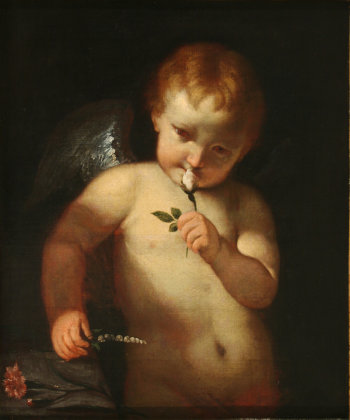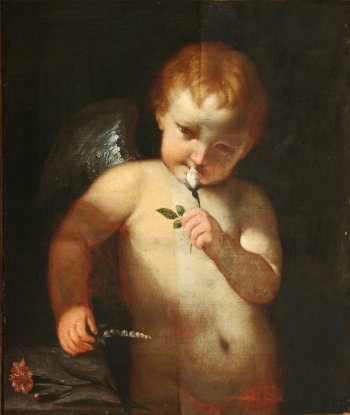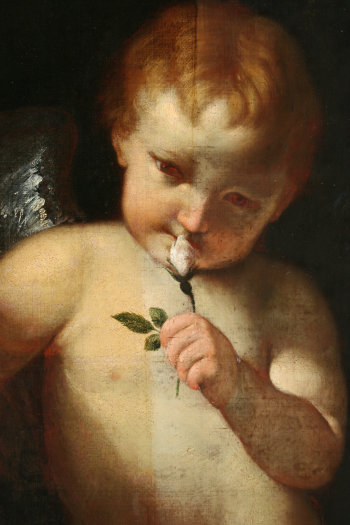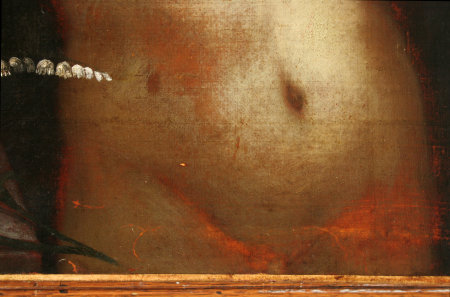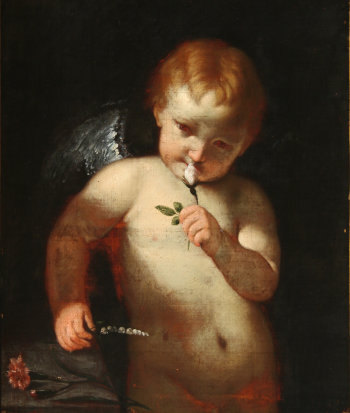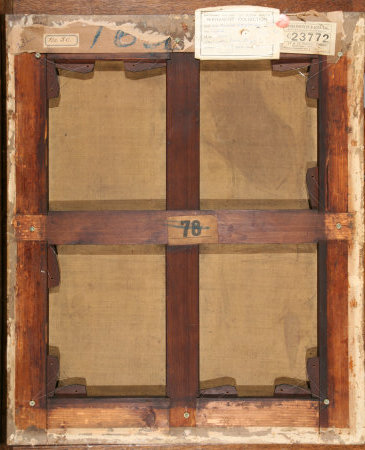TITLE:
Cupid smelling a rose
TECHNIQUE: Oil on canvas
DIMENSIONS: 580 x 490 mm
FRAME: Wooden, gesso moulded, gilded gold
TREATMENT: November 2008 β January 2009
This seems to be one of a series of images of children as Cupid painted by Reynolds.
CONDITION REPORT
SECONDARY SUPPORT
This is a 6 member mortise-and-tennon stretcher (W: 15 mm T: 86 mm), 10 keys are present. The general condition is good. The stretcher may be a later addition, as the painting has been lined commercially.
The following inscriptions appear on the top left of stretcher:
βJames Bourlet & Sons, Ltd.,
Fine Art Packers, Frame Maker
C 23863
17 & 18, Nassau Street,
Mortimer Street, W.
Phone;- Museum 1817 & 7588β
Another label reads βNo 60β that is located in the centre of the cross bar.
PRIMARY SUPPORT
The primary support is a medium-weight tabby weave canvas. The lining canvas is of the same weave but slightly thinner in weight. Two patches are seen in the lower left area. The edges are feathered and wax was used as the adhesive. Evenly placed copper tacks (average spacing 95mm) attach the canvas to the stretcher. The canvas turn-over edge (W: 40 mm) is further adhered with staples. The tacking margin is 7 mm in width. Some dirt is caught between the canvas and stretcher.
GROUND
The ground appears to be off white in colour and in a sound condition.
PAINT LAYER
The artist has applied the paint in glazes with a medium added to the paint layer. Areas of slight impasto can be seen in the highlights.
VARNISH LAYER
The natural resin varnish layer is discoloured and a layer of surface dirt covers this. This is not the original varnish. Under UV light it appears to be thickly applied, masking the image and the retouchings do not appear separately.
TREATMENT CARRIED OUT
- Photographic record was taken and this was maintained throughout the treatment.
- Tests were carried out to remove the surface dirt. After the appropriate reagent was found, cleaning proceeded safely and effectively. Cleaning proceeded using a swab stick.
- Following tests, including a safety margin-cleaning test, an organic solvent was found to remove the discoloured varnish layer safely and effectively. Cleaning proceeded using a swab stick.
- An isolating brush conservation varnish was applied. Losses were retouched and a final conservation varnish was applied.
- The frame was cleaned; both front and back, losses filled and the painting was secured in the frame using brass plates.
